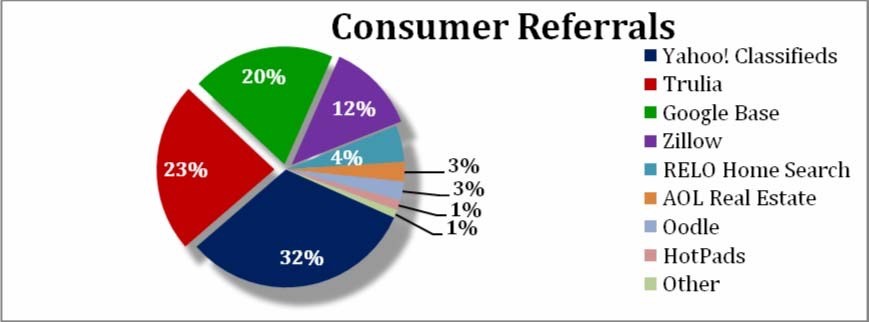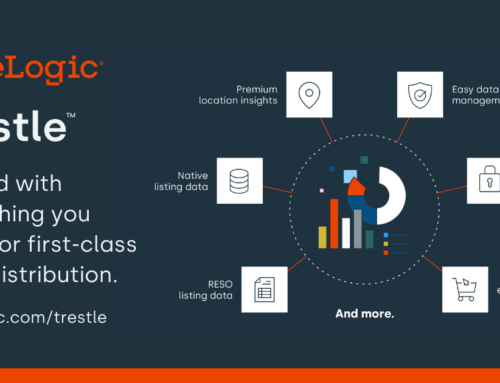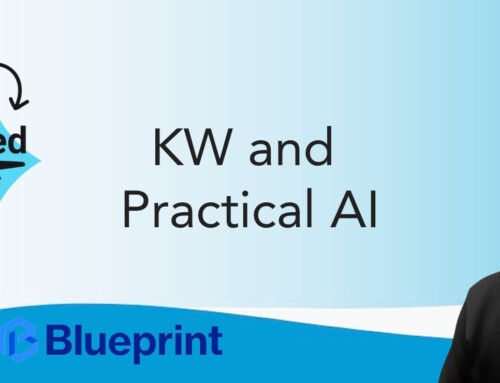 There is little doubt about the value that an MLS provides to brokers though the IDX and VOW services it offers. The ability for a broker or agent to have a full feed of MLS data to deliver a property search solution to their buyers is vital, and part of the centerpiece of cooperation between brokers that is foundational to MLS. IDX is a good thing.
There is little doubt about the value that an MLS provides to brokers though the IDX and VOW services it offers. The ability for a broker or agent to have a full feed of MLS data to deliver a property search solution to their buyers is vital, and part of the centerpiece of cooperation between brokers that is foundational to MLS. IDX is a good thing.
History of MLS and Listing Syndication
Back in August of 2008, WAV Group did a case study in Northern Nevada Regional Multiple Listing Service. 2008 was a pivotal year for listing syndication. Brokers were trying to get out of print, and online advertising websites reached more consumers and delivered more leads than newspapers. Merri Jo Cowen was the CEO of NNRMLS at the time (now she is CEO of My Florida Regional, one of the largest MLSs in the nation) and her focus was on problem solving for brokers. NNRMLS was one of the first MLSs in the country to launch a rather new service called Listhub. In 2008, our perspective was that “Listhub was a must have for every MLS.” Check out the case study here.
In the case study, we learned that brokers were struggling to get their listings to online publishers. They all had different data feed requirements and brokers were burdened with building servers and managing data feeds. When Listhub launched, they saw staggering rates of adoption at exceptional speed. Every broker jumped on quickly. From the launch in September of 2007 to the time of the case study in July of 2008, 80% of all brokers adopted the service.
Here is a fun bit of history. Customer referral market share by publisher:

If you look at this, and know what happened after this, you see that not much has changed. Zillow took over Yahoo and AOL. Zillow purchased Trulia. – That is 67% of the consumer market. Google went away. Be aware, Realtor.com was the dominator of consumer search at the time but they were not getting a data feed from Listhub. They always relied on an IDX feed that they enjoyed as a benefit of their NAR partnership.
Data Transport
This is a little geeky. But a big issue at the time was data standards. The publishers basically made up their own data schema (what you call data fields, which ones they wanted, etc). The big push at the time was the adoption of RESO (Real Estate Standards Organization) standards by publishers and the adoption of the RETS transportation standard. The good news is that the effort worked. Today, RETS is the standard for listings syndication. The bad news is that RETS is no longer a standard that is being evolved by RESO. RESO has adopted the Data Dictionary (field naming and field enumerations), and the webAPI (transportation standard).
If MLSs are going to continue to offer syndication services, they should insist on the RESO Data Dictionary and webAPI adoption by publishers. The new RESO standards are better, cheaper, faster. RETS works like a subway train. The train comes along every 15 minutes. Stops. Picks up the data passenger, and slowly moves the data passenger to their destination where it is dropped off. The webAPI works like hub. It supports individual live connections from database to database that synchronizes data in minutes, sometimes faster.
Why MLSs May Want to Dump Syndication Services
The core mission of the MLS is to support cooperation and compensation among participating brokers. Listing syndication does not support either of those missions. Listing syndication is a service that helps brokers and agents advertise listings.
Advertising listings is not a core service of the MLS. Look at the NAR MLS Policy as a reference. There is nothing about listing syndication included. If anything, listing syndication should be a premium service of the MLS. Brokers who want it should pay for the service. Indeed, large brokers and franchise brokers generally do not use the listing syndication services of the MLS for many reasons.
- Brokers are blind to the data licensing agreement between the MLS and publishers. Those are confidential agreements. When brokers ask to see the agreement, they are told by their MLS that they cannot show them.
- Franchises negotiate better terms with publishers than most MLSs. The weight of Keller Williams, Realogy, Berkshire Hathaway, Leading RE, and RE/MAX gives them negotiating power that few MLSs have. And frankly, the franchises are better negotiators.
- Broker direct syndication includes the link back to the broker’s website listing detail page from the publisher website.
- Publishers Mishandle MLS data in a variety of ways because of overlapping feed disorder (publishers often get the same listing from multiple sources).
- Photo display inaccuracies – for example a portal showing old photos from when a property was previously listed under a different MLS ID
- Listing information inaccuracies – for example, a portal showing old listing information from a property when it was previously listed under a different MLS ID.
- Address display inaccuracies – taking a street name from the MLS called Redbird and publishing it on the portal as Red Bird.
- Mapping Inaccuracies – portals using Bing Maps vs. Google Maps have a hard time matching the location of the property correctly.
- Duplicate listings – when more than one MLS syndicates a listing, it is hard to know where data errors come from (trumping order).
- Cost of delivering service. MLSs are bearing the cost of the server technology to deliver syndication services. They are developing tools that allow brokers to opt-in or opt-out. But most of all, the MLS support desk is clogged with calls from agents seeking support about listing inaccuracies on portals.
Today, brokers can easily contract directly with many companies that can handle their listing syndication for them. They can work directly with Listhub, but moreover, their broker website provider can easily handle it. In 2007 and 2008, listing syndication was really hard. With today’s data standards, it is very easy. It’s time for the MLS to step back, or get paid by those brokers who are using the premium service.





#5 In 2000, TrendMLS charged agents/participants $600 initiation fee and $90/month for IDX (actives only, no access to solds or pending); most of the cost today are due to poor design, overall, end-to-end; much of the software that mediates real estate brokerage today was designed and fielded under the rubric of “solving problems.” That attitude rarely yields win-win results. Some problems need to be “dissolved,” not “solved.” Without a holistic approach, results are often akin to a snake, eating its own tail. Most developers, sadly, don’t even have a base/fundamental understanding of how computers and networks do what they do.
#4/address inaccuracies; that’s because it’s done bassackwards; converting street names and house numbers to lat/long; should be done the opposite; address issues cannot be totally resolved for a variety of reasons; 1 example; postal addresses and street name signed don’t always match
Data Transport — RETS was never implemented as intended; it was and is, at best, pseudo-RETS; all RETS did was add layers of unnecessary inefficiencies to transport; if the folks behind RETS had, at least, required some certain types of middleware/mediation, many of the perceived issues would have been dissolved; while the “intention” was perhaps laudable, the proponents never really thought through issues. When it comes to tech issues, ignorance is not bliss.
RESO standards; again, great intentions, but poorly thought out and rife with potential (and probable) unintended negative consequences down the road (and not too far down the road, I predict); standardization efforts are being applied at the wrong point/place; there’s a big disconnect between the tech efforts and the real environments in which it is deployed. Some (many) will protest “better than what we had.” Without a technical, definition of “better,” who can say. All it means is better for certain parties’ self-interests.
Reason # 6: Sellers and prospective buyers don’t need or want 5,000,000 listings (updated every 10 nanoseconds). (Oh wait, that’s right, I forgot) Real Estate brokerage no longer has anything to do with what buyers and sellers want or need. My bad.
Thanks for the comment Mr. Gombach – but I would suggest that consumers have hundreds or thousands of broker websites to search on. Syndication is to third party websites that do not provide updates very 10 nanoseconds – in fact – data quality is horrid – lots of properties marketed as scams, off market listings not removed, sold properties still showing available. Lots of fraud. Consumers have plenty of choice without syndication sites. But most of all, my point is that brokers and agents are the customers of the MLS – not third party websites. If brokers and agents want to market to consumers on those sites, they have no limitation.
Hey Victor, appreciate the post! It inspired some discussion and our team to put together a response to clarify some misconceptions around syndication and specifically what we do at ListHub.
http://listhubnews.com/mls/5-myths-listing-syndication?utm_source=wav
Not mentioned in the article but something that has come up before and what I see in the comments is a confusion around the difference between IDX & syndication. IDX is for showing listings on a broker’s own website, while syndication deals with how brokers control how listings are distributed to 3rd parties.
If you have any questions about syndication and ListHub I’d be happy to help. Before joining ListHub I routinely consulting with a variety of real estate firms integrating w/ listing data both from MLSs & ListHub.
I was at midyear decades ago when List and Send (now know as listhub) was launched. Fantastic innovation for brokers. Not sure how it lost it’s way. Basically it was a product convinced much like Upstream- the Broker model Is perfect for listhub
While I understand the position of this article and would love to rid myself of the responsibility of negotiating with publishers, I respectfully disagree.
The way I look at this discussion is that the MLS is providing the highway that brokers can use to send their trucks (listings) to the publishers. All of the national brokerages mentioned in this article have the means and the resources to build their own highways. Smaller independent brokerages do not. Our MLS membership is roughly 68% non-franchise, so I believe we should continue offering that service.
Now, we use FlexMLS, who does a great job of making the syndication process very easy, and I don’t have enough experience with other systems to know if that is the exception or the norm. But because of Flex, our philosophy is to allow brokers to choose who gets their data and what they get, which is a decision I believe belongs solely to the broker. We just provide the highway.